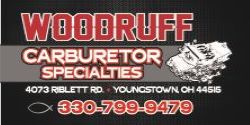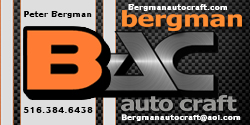LW I was looking through my weight loss notes and the K-frame engine brackets that I cut off were 5Lbs plus 4 Lbs more gone by trimming things up, shorter bolts, etc, for what that’s worth. I was thinking about if I was in as deep as you’re going I definitely would be adding some front bars especially now that you’re headed to full race car territory. That 10.00 gets to be a real pain in the *** trip wire and you’re headed that way. Just sayin it might be worth keeping in mind.
You are using an out of date browser. It may not display this or other websites correctly.
You should upgrade or use an alternative browser.
You should upgrade or use an alternative browser.
Rebuilding LemonWedge.
- Thread starter LemonWedge
- Start date
fullmetaljacket
Well-Known Member
- Local time
- 1:35 PM
- Joined
- Oct 15, 2010
- Messages
- 2,175
- Reaction score
- 3,914
- Location
- Brooklyn, New York
I agree.LW I was looking through my weight loss notes and the K-frame engine brackets that I cut off were 5Lbs plus 4 Lbs more gone by trimming things up, shorter bolts, etc, for what that’s worth. I was thinking about if I was in as deep as you’re going I definitely would be adding some front bars especially now that you’re headed to full race car territory. That 10.00 gets to be a real pain in the *** trip wire and you’re headed that way. Just sayin it might be worth keeping in mind.
LemonWedge
Well-Known Member
Current plan is simply make a few small sheetmetal patch panels and apply from the backside with 2-part epoxy. It’s not an AC car, so there’s only two holes for the heater in & out, and the (3) boltholes. We should be able to get them covered with only a few ounces of material.
6PKRTSE
Well-Known Member
I tack welded block off panels over all of my heater blower motor, heater hose holes and any other factory holes not being used. If you decide to go with a front plate and even a mid-plate. Don't forget a engine limiter mounting bracket. Similar to this one pictured. I made mine off or the transmission ears to the trash cross member.





dvw
Well-Known Member
I tack welded block off panels over all of my heater blower motor, heater hose holes and any other factory holes not being used. If you decide to go with a front plate and even a mid-plate. Don't forget a engine limiter mounting bracket. Similar to this one pictured. I made mine off or the transmission ears to the trash cross member.
I know where that limiter resides. Mine has not only all the firewall holes welded but the air intake for the heater in the right A pillar and the rubber drain plugs in the floor pan. Good fire protection is something that many don't think about, but they should. car also has a 10lb fire system.View attachment 1949402I believ my limiter. Also welded up the entire firewall, bulkhead and all.
Doug
6PKRTSE
Well-Known Member
I know where that limiter resides. Mine has not only all the firewall holes welded but the air intake for the heater in the right A pillar and the rubber drain plugs in the floor pan. Good fire protection is something that many don't think about, but they should. car also has a 10lb fire system.
Doug
View attachment 1949421
Yes, I also welded little disc's to fill where the rubber plug floor holes were and also run a fire system in my car as well, even though it is a street car that I race. It is mounted on the horizontal bar behind my driver seat.
LemonWedge
Well-Known Member
Pretty sobering video, Doug. I had already identified a hole drilled low in the firewall that I’m pretty sure I cut decades ago to pass wires through. I looked at it and could see the backside of the carpet gauze. The first thing that entered my mind was “that stuff is probably pretty flammable, this is an invitation to start the inside of the car on fire!” At the very least, we’re gonna seal up the firewall properly.
I’d love to see pics of B-body motorplate mounting setups. I’ll be running forward bars to brace the frame rails. But I need to know where the motorplate is going land in order to lay that out.
I like the limiter setup run off the transmission ears to the crossmember. I’ve seen it now here and in the “Elephant” thread on Lee’s car. I’ll make that part of the plan as well. But it still seems to me that the motorplate setup leaves the bell housing to hold a lot of weight it wasn’t designed to. I really don’t want to add the complexity of a mid-plate. But would a set of elephant ears run off the backside of the bellhousing bolts at 10 & 2 help there? Or am I overthinking it?

I’d love to see pics of B-body motorplate mounting setups. I’ll be running forward bars to brace the frame rails. But I need to know where the motorplate is going land in order to lay that out.
I like the limiter setup run off the transmission ears to the crossmember. I’ve seen it now here and in the “Elephant” thread on Lee’s car. I’ll make that part of the plan as well. But it still seems to me that the motorplate setup leaves the bell housing to hold a lot of weight it wasn’t designed to. I really don’t want to add the complexity of a mid-plate. But would a set of elephant ears run off the backside of the bellhousing bolts at 10 & 2 help there? Or am I overthinking it?
LemonWedge
Well-Known Member
I’m unaware of what tricks the RO23 & WO23, or even the HP2 post cars had up their sleeves. My belief is that Chrysler didn’t do much with these cars other than bolt the Race Hemi between the rails of a stripped down model, and offer them to the known race teams. I think by ‘67, the engineers at Chrysler already had their focus set on the bomb they would unleash in ‘68 with the SS/AH cars.Are there any of those 67's that came with a dash pad delete? Is the original dash straight? Don't want to seem like I'm spending your money, but I am thinking lean and mean.
LW I was looking through my weight loss notes and the K-frame engine brackets that I cut off were 5Lbs plus 4 Lbs more gone by trimming things up, shorter bolts, etc, for what that’s worth. I was thinking about if I was in as deep as you’re going I definitely would be adding some front bars especially now that you’re headed to full race car territory. That 10.00 gets to be a real pain in the *** trip wire and you’re headed that way. Just sayin it might be worth keeping in mind.
I need to know what sort of tooling works best to trim these things. Cutting wheel? Sawzall? Scroll saw? Torch? What’s the hot ticket for trimming the double-thickness pinchweld areas of these things?
A 3/8” front motor plate and a couple of limiters and you’re good to go.I’d love to see pics of B-body motorplate mounting setups. I’ll be running forward bars to brace the frame rails. But I need to know where the motorplate is going land in order to lay that out.
This will get you close for plate location. The AR plate sits flat on the frame rails in the right position.
A couple of limiters works well at the trans.
fullmetaljacket
Well-Known Member
- Local time
- 1:35 PM
- Joined
- Oct 15, 2010
- Messages
- 2,175
- Reaction score
- 3,914
- Location
- Brooklyn, New York
I use limiters (Aluminum limiters at that) on the trans ears as well, and so far no issues. Then again, I don't abuse my car for fanfare, only at the track or the $$ run will I let it loose.
Upfront, use a solid plate that goes across at the right thickness, don't use ears on the front because they will flex and bend. The plate stays more sturdier and reacts with the chassis better. A few holes in it like the one on Malex's posted here are not bad at all. Make sure all your measurements, angles, levels and pinion angles are correct before welding any mounting brackets for the plate.
I made mine from scratch, but there are some nice pieces out there in the wild.
Upfront, use a solid plate that goes across at the right thickness, don't use ears on the front because they will flex and bend. The plate stays more sturdier and reacts with the chassis better. A few holes in it like the one on Malex's posted here are not bad at all. Make sure all your measurements, angles, levels and pinion angles are correct before welding any mounting brackets for the plate.
I made mine from scratch, but there are some nice pieces out there in the wild.
Tex013
Well-Known Member
LW ,
only 1 extra thing I can think of . Havent seen too many do it . If going to a motorplate I would be measuring and checking to use studs @ waterpump housing where it mounts . Check ARP for separate availability AND broached for allen key . Means even if you pull stuff off front of motor it will be supported also easier assembly . DVW suggestion to machine housing is good though I would prefer to run a gasket .
When deciding on safety / roll cage/bar etc . Its always easier to choose and set a goal and build back from that . My Plymouth has a 5 point rollbar and is limited to 10.00 . Perfect for my goal . I dont wont the extra SFI/cage requirements or moving permanently up a class (BOX). Especially as a street car . Also that 10.00 is about my wallet rev limiter as I am not driven by increased Et etc .I see others with cars too quick and having to slow down as they dont want to fit the safety gear , it makes me laugh a little . As a bracket racer just build to within your ET .
Just my 2 cents worth .
Tex
only 1 extra thing I can think of . Havent seen too many do it . If going to a motorplate I would be measuring and checking to use studs @ waterpump housing where it mounts . Check ARP for separate availability AND broached for allen key . Means even if you pull stuff off front of motor it will be supported also easier assembly . DVW suggestion to machine housing is good though I would prefer to run a gasket .
When deciding on safety / roll cage/bar etc . Its always easier to choose and set a goal and build back from that . My Plymouth has a 5 point rollbar and is limited to 10.00 . Perfect for my goal . I dont wont the extra SFI/cage requirements or moving permanently up a class (BOX). Especially as a street car . Also that 10.00 is about my wallet rev limiter as I am not driven by increased Et etc .I see others with cars too quick and having to slow down as they dont want to fit the safety gear , it makes me laugh a little . As a bracket racer just build to within your ET .
Just my 2 cents worth .
Tex
dvw
Well-Known Member
I ran gaskets on the plate on my previous car. After a while they would leak. This car has used Ultra Grey with no gaskets for 13 years, zero leaks. No mid plate in mine. Same trans case and tail housing (1965) since the day it was built . Snout bars outside the engine compartment have two good points. More clearance in the engine compartment, you can tie into the shock towers.. Mine actually are in and out. It was a lot of work as the foward portion of the inner fenders had to be removed and fabbed. Came up with a trick to weld the snout bars to the front hoop. Hole saw the A piller with a 4" hole. Weld the bars, weld the cutout back into the hole. The dash bar is under the dash. Looks better, supports the column and you knees have more room. I have to say every time I see Mikes car I wish I could get to that level. Mines functional, his is like it was done By Dave Kendig.









Last edited:
6PKRTSE
Well-Known Member
As you can see from my earlier posted photos of my engine bay. I used the snout bars to make my front plate tubular mounts from with a ledge on each tab that the plate sits on.Pretty sobering video, Doug. I had already identified a hole drilled low in the firewall that I’m pretty sure I cut decades ago to pass wires through. I looked at it and could see the backside of the carpet gauze. The first thing that entered my mind was “that stuff is probably pretty flammable, this is an invitation to start the inside of the car on fire!” At the very least, we’re gonna seal up the firewall properly.
I’d love to see pics of B-body motorplate mounting setups. I’ll be running forward bars to brace the frame rails. But I need to know where the motorplate is going land in order to lay that out.
I like the limiter setup run off the transmission ears to the crossmember. I’ve seen it now here and in the “Elephant” thread on Lee’s car. I’ll make that part of the plan as well. But it still seems to me that the motorplate setup leaves the bell housing to hold a lot of weight it wasn’t designed to. I really don’t want to add the complexity of a mid-plate. But would a set of elephant ears run off the backside of the bellhousing bolts at 10 & 2 help there? Or am I overthinking it?
View attachment 1949643
LemonWedge
Well-Known Member
LW ,
only 1 extra thing I can think of . Havent seen too many do it . If going to a motorplate I would be measuring and checking to use studs @ waterpump housing where it mounts . Check ARP for separate availability AND broached for allen key . Means even if you pull stuff off front of motor it will be supported also easier assembly . DVW suggestion to machine housing is good though I would prefer to run a gasket .
When deciding on safety / roll cage/bar etc . Its always easier to choose and set a goal and build back from that . My Plymouth has a 5 point rollbar and is limited to 10.00 . Perfect for my goal . I dont wont the extra SFI/cage requirements or moving permanently up a class (BOX). Especially as a street car . Also that 10.00 is about my wallet rev limiter as I am not driven by increased Et etc .I see others with cars too quick and having to slow down as they dont want to fit the safety gear , it makes me laugh a little . As a bracket racer just build to within your ET .
Just my 2 cents worth .
Tex
This is really helpful, Tex. You and I are of the same mindset regarding ET and all of the extra requirements that go with crossing the 9.99 line. I also agree that the cubic dollars it takes to maintain a sub-10.0 program just don’t align with how I approach this hobby. Ultimately, I want a car that is absolutely deadly consistent in the 10.00 - 10.15 range…. The best tool on the property for hitting that number, while maintaining what I’ll call “an NSS look” is what I’m aiming to build.
The studded plate mounts sound like a must. And for my car, machining the housing as DVW outlined earlier may be necessary due to water pump / fan clearance. Either that or moving the engine rearward 3/8” might be just as easy. I’d just have to get creative with the trans-mount. I know Doug also mentioned that trans-tunnel surgery may be worthwhile at this point, and I intend to look into that.
Last edited:
LemonWedge
Well-Known Member
I did take note of that, 6PK. The mock up on that must have been tedious, unless you put the bars in with the engine already mounted. Nice work.As you can see from my earlier posted photos of my engine bay. I used the snout bars to make my front plate tubular mounts from with a ledge on each tab that the plate sits on.
6PKRTSE
Well-Known Member
I didn't move anything back 3/8" or have to machine the water pump houing 3/8" to use the front plate. All my accessories mount to the front plate itself and I just made whatever crank mandrel spacers needed to make the Fead all line up.This is really helpful, Tex. You and I are of the same mindset regarding ET and all of the extra requirements that go with crossing the 9.99 line. I also agree that the cubic dollars it takes to maintain a sub-10.0 program just don’t align with how I approach this hobby. Ultimately, I want a car that is absolutely deadly consistent in the 10.00 - 10.15 range…. The best tool on the property for hitting that number, while maintaining what I’ll call “an NSS look” is what I’m aiming to build.
The studded plate mounts sound like a must. And for my car, machining the housing as DVW outlined earlier may be necessary due to water pump / fan clearance. Either that or moving the engine rearward 3/8” might be just as easy. I’d just have to get creative with the trans-mount. I know Doug also mentioned that trans-tunnel surgery may be worthwhile at this point, and I intend to look into that.
Encswsm
Well-Known Member
Hmmm like Christine?Funny you should say this FMJ. This may sound silly, but if there was a group that could relate to the following, maybe this group is it…. So I’ll open up:
A few weeks ago as I got started with the teardown process, I went out into the garage and didn’t even know where to start. I stood there staring at the car, just trying to put my brain into the right frame of mind to turn wrenches, and make progress. I decided to climb inside the car, for whatever reason I don’t even know. Once I sat in the drivers seat, a sense of calm came over me. For the first time since the accident, I felt completely confident that rebuilding this car was the right direction. It was as though the car was talking to me, telling me everything would be okay. I may have even had a little conversation with my big yellow buddy. Assuring it that I would make things right and that there was more fun ahead for both of us. Ever since that somewhat odd moment with just myself and the car, I’ve felt rejuvenated and motivated to spend time with LemonWedge again.
Could a collection of steel, plastic, and glass have a “soul” of some kind??? I’m not sure…. But it certainly would seem that after 24 years together, this thing has at the very least become part of me.
I sure can relate to Tex’s point of view on setting a goal and building back from that. I think we all start out that way. I did. In my case my goal was roll bar, no cage and to maybe one day see 10.5’s. Well the 10.5’s were achieved a number of years back now. Since that time and without making any combination changes at all, and just working on the car itself each off season the 10.00 was met and surpassed. A lot of my off season changes actually came right from the very same FBBO guys helping LW along now. LOL Yep I’ve had to slow things down a little which is easy & simple tuning. No regrets though.When deciding on safety / roll cage/bar etc . It’s always easier to choose and set a goal and build back from that . My Plymouth has a 5 point rollbar and is limited to 10.00 . Perfect for my goal . I dont wont the extra SFI/cage requirements or moving permanently up a class (BOX). Especially as a street car . Also that 10.00 is about my wallet rev limiter as I am not driven by increased Et etc .I see others with cars too quick and having to slow down as they dont want to fit the safety gear , it makes me laugh a little . As a bracket racer just build to within your ET .
Turning this back to LW, there’s no doubt that as he puts his Satellite back together with his planned changes and guidance he’s going down the same path that crosses that 10.0 line.
He’s shedding a lot of LBS even while adding chassis rigidity (which always pays off in the 60’)
I for one am sure looking forward to seeing this project play out. Good luck LW!
Similar threads
- Replies
- 10
- Views
- 2K















